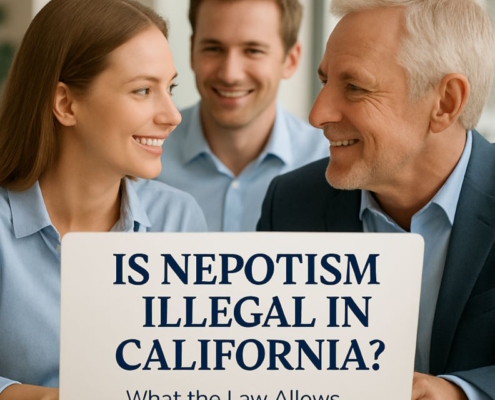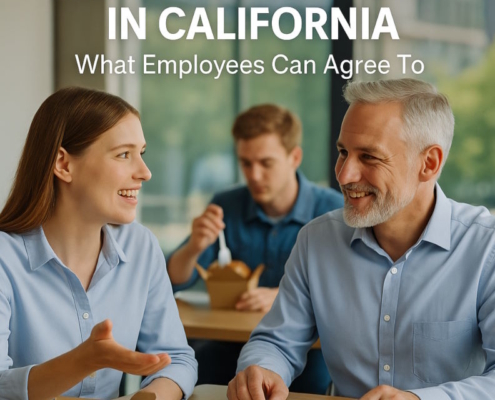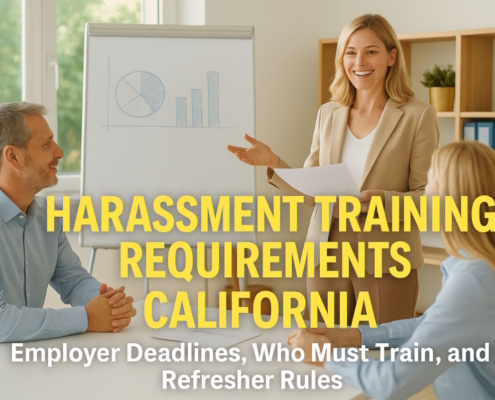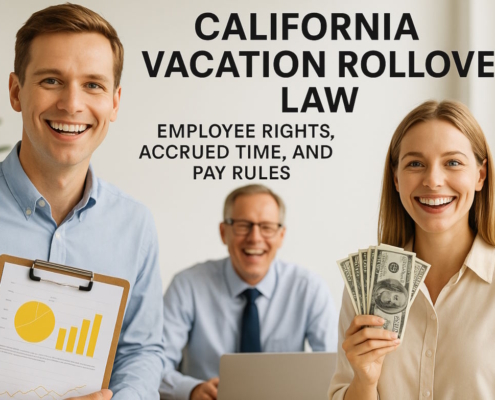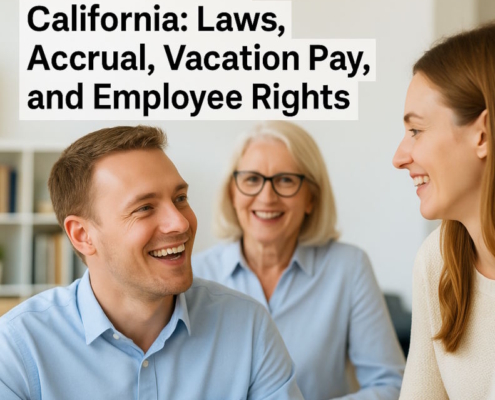How do you respond to a PAGA lawsuit?
Upon receiving a PAGA claim, an employer should immediately contact an employment attorney with experience defending PAGA lawsuits. Responses to PAGA claims must be filed online, with a copy sent by certified mail to the aggrieved employee or their attorney.
Author: Douglas Wade, Attorney
Email | Call (800) 484-4610
What Is the Meaning of PAGA?
The Private Attorneys General Act of 2004, otherwise known as PAGA, allows employees to sue employers for California labor code violations. An individual can file a claim for either themselves or other aggrieved employees. This may essentially form a collective action. This California law also permits the individual filing the PAGA action to join other claims against a particular employer. This is the case even of the individual plaintiff has not endured an injury. The law is therefore rather broad in scope.
Employers have received over thirty thousand PAGA complaints over the last 15 years. Fines under PAGA may involve a significant amount. For instance, Walmart recently got a fine of over $100 million from a PAGA suit concerning pay stubs that failed to factor in overtime. Plenty of smaller employers try to reach a settlement outside the courtroom in an attempt to avoid significant judgments.
PAGA suits tend to arise after a former worker contacts a PAGA attorney. The lawyer may want to examine the worker’s wage statements and could identify an error in the personal information, such as address or name, of the company. Such a mistake qualifies as a breach of the California’s labor laws, and the lawyer can thus go forward with filing a claim under PAGA. The lawyer will be allowed to seek compensation for both the worker who contacted them, but also other employees, including those who may not show interest in participating in the PAGA lawsuit. The attorney can use the process of discovery to boost the price of litigation, which will pressure the company into negotiating a settlement.
When it comes to a PAGA claim, the LWDA receive seventy-five percent of any settlement or judgement, while the aggrieved workers collect the remaining twenty-five percent. The lawyers who speak for the workers generally ask for thirty-three percent of the award. This means that a settlement for $300,000 results in the lawyers asking for $100,000. The LWDA would get $150,000, and the employee would get a mere $50,000. In this case, the lawyers representing the workers receive double what their clients receive.
In California, certain companies have advocated that PAGA be scaled back or completely eliminated.
In this article, our employer attorney handling PAGA claims discusses how to respond to a PAGA notice letter as follows:
PAGA Defense Attorney
What Defines an Aggrieved Worker?
Aggrieved Employee is the employee or employees currently employed, including those terminated, on leave, laid off, and in a protected class who suffered harm or loss from the alleged employment law violations. Under PAGA, only a wronged worker has the ability to sue their employer. According to the law, an aggrieved worker is defined as an individual whom the suspected violator employed and who suffered at least one of the supposed violations.
Sometimes, employees may file personal labor suits as well as claims under PAGA. Some employers have settled these personal claims, hoping that the employee will lose the ability to carry out the claims under PAGA. In Kim v. Reins International California, Inc., the Supreme Court of California ruled that resolving personal claims while keeping PAGA claim from the settlement would not stop the worker from filing a PAGA claim afterward concerning the same violations of the labor code that were dealt with on a personal level.
While this case appeared to have a big impact, its effect may be reduced somewhat because a lot of settlements do not have an exception for PAGA claim in their release. Companies should therefore think about including a covenant in their settlement agreements that says the former worker will not engage in a PAGA claim or class action.
What Kinds of Claims Does PAGA Cover?
Through PAGA, workers can file claims concerning violations of California’s Labor Code to receive compensation. These fines are different than the legal damages that workers may get through their own personal claim.
There are 3 major kinds of claims under PAGA:
- Under Section 2699.5 of the California Labor Code, there is a catalog of labor laws under which employees may file claims under PAGA. These laws address retaliation, discrimination, not paying wages on termination, not providing rest and meal breaks, not providing wage statements, and other violations. Under this section, there are one hundred violations where PAGA applies.
- PAGA claims may also be filed for OSHA violations. Examples include not providing a healthful and safe workplace, not providing safety mechanisms and safe practices, and not having a proper program for injury prevention. Importantly, PAGA claims can be filed if employers have discharged or laid off employees who refuse to be in a space that has health or safety violations.
- PAGA claims may be filed for violations beyond those enumerated in section 2699.5 or Cal OSHA. This group may include various labor violations, such as not providing compensated sick days, knowingly misclassifying employees as independent contractors, and violating the labor code for certain unique occupations (mining, lumber, theater).
Some claims, however, may not be filed under PAGA. According to the Labor Code, PAGA claims may not be filed for “any violation of a posting, notice, agency reporting, or filing requirement of this code, except where the filing or reporting requirement involved mandatory payroll or workplace injury reporting.”
Also, according to the Labor Code, PAGA claim does not “apply to the recovery of administrative and civil penalties in connection with … workers’ compensation law.”
Has an Employee Met PAGA Claim Notice Requirements?
PAGA claims under section 2699.5, the claimant needs to first file with the LWDA and notify the employer using certified mail, informing them of the facts supporting the alleged infraction. The employee is also required to pay a filing fee of seventy-five dollars. Similarly, an employer has to pay a fee of seventy-five dollars to cover any response.
Regarding civil actions that allege OSHA violations, the wronged worker is required to file a notice online with OSHA and provide a copy to the company via certified mail. A copy should also be given to the LWDA. This notice should include the particular provisions of Cal/OSHA that have supposedly been violated. This also includes the theories and facts needed to back up the allegation.
When it comes to civil actions that allege an infraction not included in Cal/OSHA or section 2699.5, the wronged worker should file online with the LWDA and notify their employer of the particular laws supposedly violated, providing the relevant facts to defend the accusation. The employee is required to pay a seventy-five-dollar fee. The company needs to also pay a seventy-five dollar fee to cover any response.
If an employee does not fulfill the notice requirement for a PAGA claim, the worker may be prevented from making a PAGA claim. In the case Khan v. Dunn-Edwards Corp., a previous worker notified the employer by saying the following: “This correspondence shall constitute written notice under Labor Code Section 2699.3 of my claims against my former employer.” The notice failed to mention any employee, former or current, other than the individual who submitted the notice.
Because of this fact, the court decided that the worker did not fulfill the PAGA claim notice requirements. Because the worker did not properly notify the people taking part in the PAGA claim, the court ruled on the side of the company.
The court decided in the case of Alcantar v. Hobart Service that a notice presenting only legal conclusions does not fulfill the requirements since it does not provide the necessary facts and theories.
Has the Worker Used Other Administrative Remedies?
According PAGA claim statute, a worker is required to pursue other administrative routes before bringing a claim under PAGA. For instance, the LWDA should be given an opportunity to consider whether they wish to look into the matter.
2699.5 infractions:
Once an employee has given notice in the proper way, the LWDA will then contact the company and wronged worker via certified mail, stating whether or not they plan to look into the supposed infraction within sixty days of the notice postmark date. If the agency fails to make contact within sixty-five days, the worker is free to go forward with their PAGA claim.
If the agency chooses to look into the purported breach, then the agency will contact the company and the worker of its decision within sixty-five days of the postmark on the notice. After, by or before 120 days of that announcement, the agency may look into the supposed breach and deliver whatever relevant citation. If the agency chooses not to deliver a citation, then it will contact the company and worker within 5 business days via certified mail. After learning that a citation was not issued, the worker may continue with a claim under PAGA. Also, if the agency does not make contact within the sixty-five calendar days, then worker may similarly proceed with a claim under PAGA.
Cal/OSHA:
Once an employee has provided formal notice concerning infractions under Cal/OSHA, OSHA will investigate the supposed breach according to the procedures listed in the California Labor Code. If the department chooses to deliver a citation, then the employee will not be able to file a claim under PAGA.
If the department does not deliver a citation, and the worker chooses to dispute that decision, then the employee is free to take the issue to court.
Infractions not included in Cal/OSHA or 2699.5:
In this situation, there are no grounds for an agency review. That said, infractions not mentioned in Cal/OSHA or 2699.5 have particular cure provisions available.
What Is the PAGA Claim Statute of Limitations?
PAGA claim has a statute of limitations of 1 year. This means that an employee needs to contact the LWDA with their complaint before a year elapses since the date of the violation. For instance, in the case Esparza v. Safeway, Inc., the employees’ PAGA claim relied upon violations that happened prior to June 2007, which meant that their PAGA suit was ineligible to be filed as of June 2008. The employees did not file their claims until July 2008. Thus, the court ruled that the claims were ineligible to be brought.
How to Respond to PAGA Claim Violations?
- Curing the violations. Under PAGA, employers are permitted to cure particular infractions. Curing may be described as:
- The company reduces each alleged violation
- The company follows the statutes mentioned in the worker’s notice
- Any wronged worker is fairly compensated
Particular breaches related to pay stubs PAGA claim have special requirements for curing.
Infractions mentioned in section 2699.5 are unable to be cured. Only those not included in section 2699.5 are eligible for curing. Infractions under Cal/OSHA may be cured, but this is only the case if OSHA does not investigate after receiving notice.
- Curing Timeline. An employer has thirty-three days to cure any alleged breaches, beginning from the receipt of the postmarked notice. If the violation is fixed, then the employer has to file online with the agency and notify the employee by certified mail. In this notice, they must describe what actions they took to fix the violation. After the infractions have been fixed before the thirty-three days expires, the worker may not file a PAGA claim. That said, the worker may go forward with a PAGA lawsuit if the infractions have not been fixed within thirty-three days.
Employers can cure the PAGA claim infractions as many as 3 times within a year. With regard to breaches concerning itemized wage statement requirements, the employer can only cure the infraction once in a year. Specifically, this requirement mandates that statements provide the dates of the worker’s pay period, as well as the address and name of the entity.
That said, the worker is permitted to argue that a PAGA claim has not been cured with the appropriate agency along with the courts, assuming there remains a disagreement.
- Reduce the Penalties. Regardless of whether infractions are subject to PAGA’s cure provisions, an employer may still have the opportunity to mitigate penalties assigned in court by quickly fixing any issues. Courts have the ability and power to decrease the penalty if it will stop an unjust award.
In the case Fleming v. Covidien Inc., the court ruled that a PAGA fine was unjust when “defendants were not aware that the wage statements violated the law and took prompt steps to correct all violations once notified.” It is wise to correct any infractions as soon as an employer receives notification of them. This will prove in court that reduced penalties may be appropriate.
How to Prevent PAGA Claims in the Future
It is important that employers work with their legal counsel and HR department to make sure that the correct processes are established to prevent PAGA claims. The employer should also record their effort to follow the law. This may include writing down any policy updates, keeping training records, and saving emails that show compliance efforts.
Some PAGA claim preventative actions are described below:
- Make sure that employees get rest and meal periods. Regularly review employee time records.
- Provide rest and meal break premiums when appropriate.
- Compensate overtime.
- Ensure workers are correctly classified.
- Ensure that employment policies are compliant with labor laws.
- Think about providing severance packages.
- Make sure that correct itemized wage statements are given to workers.
- Review workplace safety and health to make sure the standards are Cal/OSHA compliant.
Have a quick question? We answered nearly 2000 FAQs.
See all blogs: Business | Corporate | Employment
Most recent blogs:





